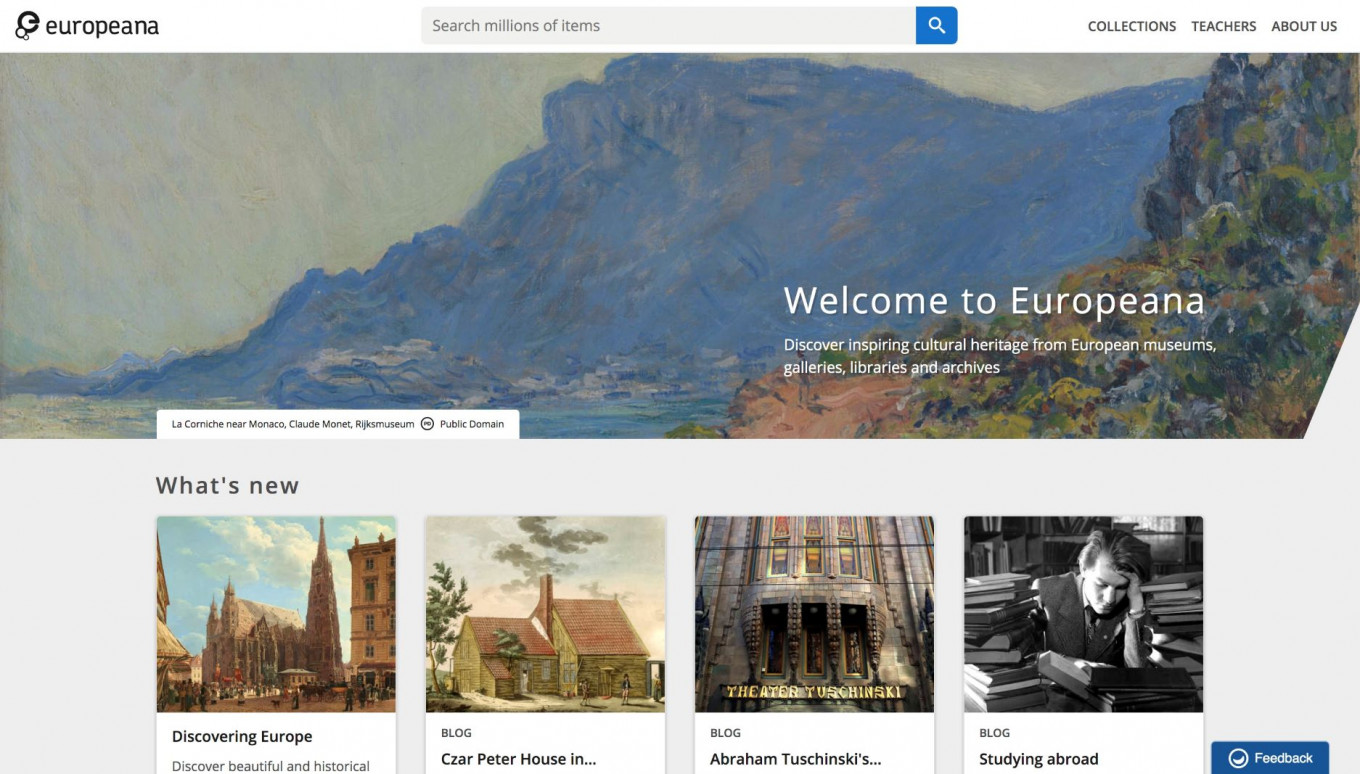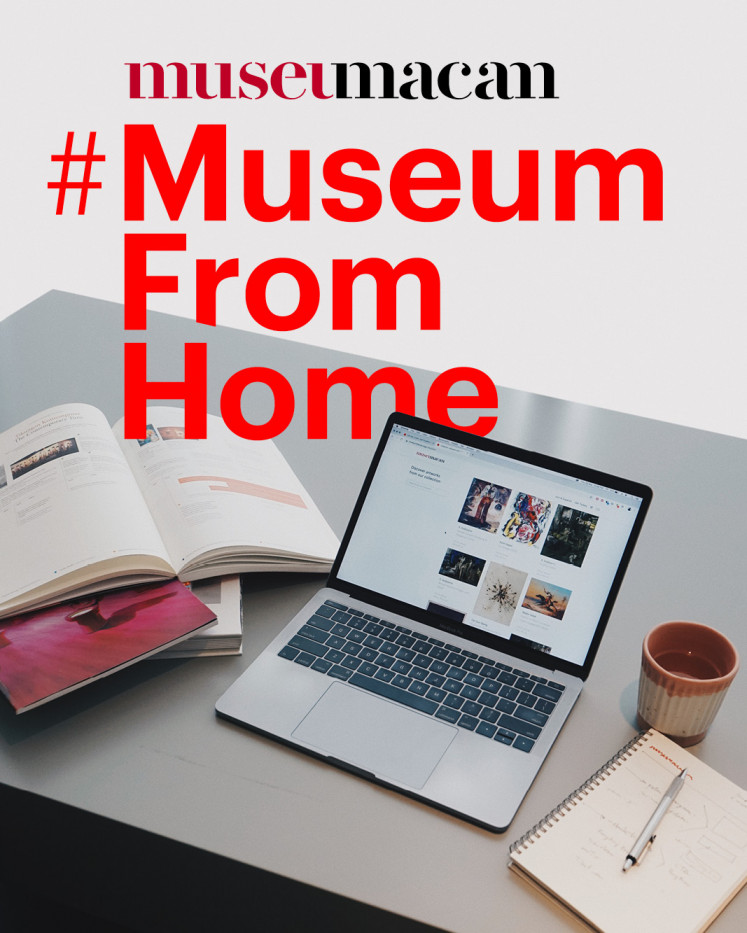Popular Reads
Top Results
Can't find what you're looking for?
View all search resultsPopular Reads
Top Results
Can't find what you're looking for?
View all search resultsDigital curation and storytelling in GLAM institutions
The pandemic has forced museums to shift to digital platforms to survive.
Change text size
Gift Premium Articles
to Anyone
S
torytelling has always been an integral part of museums and cultural collection curation, making them more relatable to audiences as narratives provide an accessible framework for individuals to become interested and emotionally engaged with the objects put on display.
When the physical institution of the museum is taken away, curation takes a different form: digital. This becomes even more relevant in light of the pandemic, as cultural institutions are forced to close their doors to visitors.
“Storytelling is not a recent buzzword that was just invented because everyone is on the internet and wants to have fun there, but it’s actually a very old way of sharing ideas. Whether it’s digital or not, storytelling is about making connections wither between people or between people and ideas,” said Aleksandra Strzelichowska, senior marketing specialist at the Europeana Foundation, an independent, nonprofit platform that focuses on cultural heritage.
She was one of the speakers at an online seminar on Digital Storytelling for GLAM Institutions held by Goethe-Institut Indonesien. Another speaker was Nina Hidayat, head of communications at Museum MACAN.
The event is a buildup to Culture Hack program, which set to take place on Nov. 6 to Nov. 8 this year. The festival invites creatives and tech enthusiasts to collaborate and innovate, to remix and reuse cultural data supplied by GLAM (galleries, libraries, archives and museums) institutions.
Strzelichowska said there are advantages in curating online exhibitions and multimedia galleries.
“[Online exhibitions] and digitally curating content are worth it because they provide a chance to bring visibility to the content often beyond the usual audiences of your museum because of geographical reasons,” she said.
Creating online exhibitions also allows creatives to experiment with the way content is communicated, she added.
“In order to make it interesting online, we always make sure to have an engaging narrative. So, rather than an image and a description, [...] we try to tell a story through text to include multimedia and interactive elements so that people can play around […] pick how they want to experience it.”
For those less experienced in design, Strzelichowska suggested that museum curators could also consider partnerships with tech companies. However, a simpler platform alternative that is accessible to many is social media.
“Social media is another thing that gives you a chance to show your collections without having your own platform and technical infrastructure,” she said. “Social media is a great way to meet people where they are. You don’t need to guide anyone; they know how it works.”
A large advantage to having a digital platform is the possibility for creating interactive experiences, where the user is at the center of the experience and in charge of it, seamlessly embedding cultural content into the story.
“This is a bit of the moment where it gets its own life, where you let go and see what happens with it,” Strzelichowska said.
At the session, Nina discussed her road to digital storytelling after the museum had to close during the start of the large-scale social restrictions (PSBB) in March.
The museum, one of the first major modern and contemporary art museums in Indonesia, serves as a disruption to the Indonesian arts and culture scene, setting the stage for what other local museums may look like.
Due to the lack of similar institutions at the time, the staff behind the establishment became trailblazers in demonstrating what it means to be a museum in modern-day Jakarta.
After establishing its identity, MACAN has grown successful in the three years since opening in 2017, with over 120,000 visitors encountering its first exhibition within four months.
However, because of the lockdown, Nina and her team had no choice but to retreat to the digital sphere.
“It was a sobering moment for us; we had to think quickly about how to continue engaging with our visitors and how the experience of enjoying art would change now that the physical museum is no longer there and we are forced to rely on online platforms,” she said.
On April 1, MACAN launched its Museum From Home initiative, a way for people to see, listen to and learn about art online.
However, Nina realized the public’s idea of the museum was solely the concept of a physical building housing art.
“[When] we don’t have the main platform of the physical building itself, [there is less of an] incentive to follow the museum on social media and digital platforms when the museum itself is not open physically,” she said.
Digital takeover: Museum MACAN’s Museum From Home online initiative is an art fan favorite as it brings art directly to the audiences. (Courtesy of Museum MACAN/-)As digital technology has become increasingly pervasive, this mindset of the modern museum being a solely physical institution is dated and untrue.
Nina believes audiences must fundamentally realize that business doesn’t stop for GLAM institutions when the doors close.
“In people’s minds, when the museum closes physically, then the programs stop as well. It becomes a challenge for us to tell people that […] it doesn’t mean that we stop working,” Nina said.
In order to draw online visitors in to digital exhibitions and engage with audiovisual content, Nina said there are some key factors in adapting the physical pieces into digital content.
“The most important [element] is the story. When people can’t [physically encounter art], the story becomes even more important because stories help people feel, see and engage with the art.
“Second [factor] is personification. When we see artworks in the museum, the experience becomes complete when there are museum tour guides helping us to understand the context of the artwork.”
Since digital platforms allow for real-time data and engagement statistics from users, experiences can be perfected and tailored for the audience.
“I think the beauty of digital platforms is that we get real-time feedback. That really helps us to adjust from time to time, adjust continuously to the ways in which we tell the story,” Nina said. “By the end of the day, the story is important, but the way [in which the stories are told are just as important].”
Nina is aware that in Indonesia, the need for art and culture might not be as common yet for everyone – it is a need that comes up after all your primary needs are met – but there is steady growth of art appreciation.
“In the last five years, art and culture has become more popular than before, people visit art exhibitions, not for art people only, but for the general public as well,” Nina said.
Online platforms, she said, have created a massive paradigm shift throughout the arts and culture industry.
“It has a lot to do with the way we consume art and culture these days. We don’t only encounter art and culture through physical experience but through digital platforms and that has changed the way people see art, a thing that you can scroll through on Instagram. Art has become a part of daily life.” (ste)
-- The writer is an intern at The Jakarta Post













